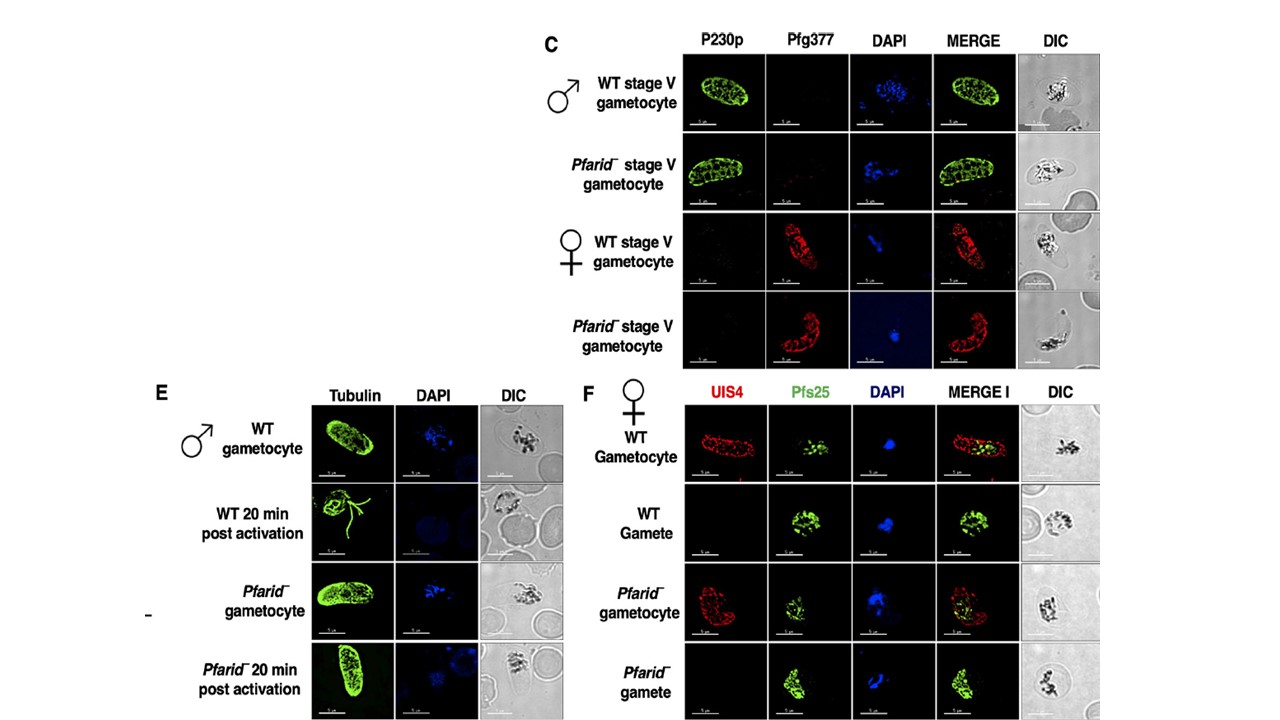Pfarid– parasites grow normally as asexual parasites and undergo gametocytogenesis but fail to form microgametes. (C) IFAs performed for day 15 WT or Pfarid– stage V gametocytes (clone 4E) using a-P230p (green), a stage V male-specific marker, and Pfg377 (red), a marker for female gametocytes. (E) IFAs performed on WT or Pfarid–(clone 4E) gametocytes activated for 20 min in vitro using a-tubulin II (green), a male-specific marker. a-Tubulin II staining showed male gametes emerging from an exflagellating male gametocyte in WT PfNF54. The Pfarid– gametocytes were defective for male gametocyte exflagellation. ND, not detected. (F) IFAs performed on WT PfNF54 and Pfarid– (clone 4E) gametocytes activated for 20 min in vitro using Pfs25 (green), a marker for female gametes, and PfUIS4, marker for the parasitophorous vacuole membrane. Female gametes did not show any defect in egress from the infected RBC
Kumar S, Baranwal VK, Haile MT, Oualim KMZ, Abatiyow BA, Kennedy SY, Vaughan AM, Kappe SHI. PfARID Regulates P. falciparum Malaria Parasite Male Gametogenesis and Female Fertility and Is Critical for Parasite Transmission to the Mosquito Vector. mBio. 2022 31:e0057822.
Other associated proteins
| PFID | Formal Annotation |
|---|---|
| PF3D7_0209000 | 6-cysteine protein p230 |
| PF3D7_0529800 | conserved Plasmodium protein, unknown function |
| PF3D7_0603600 | at-rich interactive domain-containing protein, putative |
| PF3D7_0903700 | alpha tubulin 1 |
| PF3D7_1031000 | ookinete surface protein p25 |
